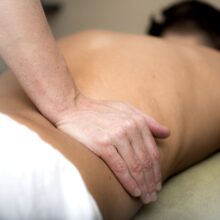Understanding Spinal Stenosis
Spinal stenosis is a condition characterized by the narrowing of the spinal canal, which puts pressure on the spinal cord and nerves. This narrowing can occur in any part of the spine but is most common in the lower back (lumbar stenosis) and the neck (cervical stenosis).
The primary cause of spinal stenosis is age-related degeneration. Over time, the wear and tear on the spine can lead to the thickening of ligaments, bone spurs, and herniated discs, all of which contribute to the narrowing of the spinal canal. Other causes include congenital spinal abnormalities, tumors, and traumatic injuries.
Symptoms of spinal stenosis vary depending on the severity and location of the narrowing. Common symptoms include pain, numbness, tingling, and muscle weakness. In severe cases, spinal stenosis can lead to significant disability, impacting mobility and quality of life.
Diagnosis involves a combination of medical history, physical examination, and imaging tests such as X-rays, MRI, or CT scans to visualize the extent of the spinal canal narrowing.
Treatment options range from conservative methods like physical therapy, medications, and epidural steroid injections to surgical interventions. Surgery is typically considered when conservative treatments fail to alleviate symptoms or when there is significant neurological impairment.
Preventing spinal stenosis involves maintaining a healthy lifestyle, regular exercise, good posture, and avoiding activities that put excessive strain on the spine.


